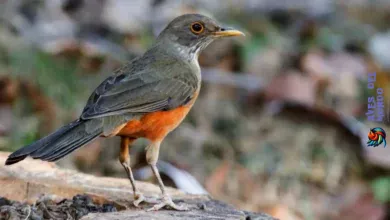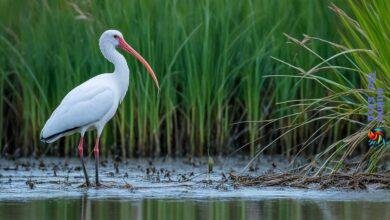Did you know that bluebirds have made a remarkable comeback in recent years? Thanks to the installation of thousands of bluebird nest boxes, these vibrant birds are thriving once again. If you’re a bird enthusiast or enjoy bird watching, you’ll be amazed by the various species and intriguing behaviors of bluebirds. In this article, we’ll explore the bluebird facts that will captivate your attention and deepen your appreciation for these beautiful creatures.
Bluebird Nesting Habits
Bluebirds are fascinating creatures known for their unique nesting habits. Understanding their nesting behaviors can help you identify bluebirds, create suitable habitats, and attract these beautiful birds to your backyard.
Bluebirds typically nest from March through August, with the female taking on the responsibility of incubating the eggs. They are cavity nesters, meaning they seek out existing holes or cavities in trees or man-made structures to build their nests.
However, due to habitat loss and the decline of natural nest cavities, bluebirds increasingly rely on artificial nest boxes. These nest boxes mimic the cavities that bluebirds prefer, providing them with a safe and secure place to raise their young.
Bluebirds can raise multiple broods in a single season, and pairs may even build multiple nests. It’s not uncommon for bluebirds to build the second nest on top of the first or choose an entirely new site for nesting.
They have a nesting success rate of about 60%, which means that, on average, 6 out of 10 nests will successfully fledge young birds. To increase the chances of successful nesting, it’s essential to provide suitable habitat and nesting options for bluebirds.
Bluebirds prefer to nest in abandoned woodpecker holes or other pre-existing cavities. They seek out nests that are hidden and well-protected, providing a safe environment for their hatchlings. By offering artificial nest boxes, you can help fulfill their nesting needs and contribute to their population conservation.
To attract bluebirds to your yard, consider providing nesting boxes specifically designed for them. These nest boxes should have proper dimensions and entrance hole sizes to accommodate bluebirds while excluding larger birds that may compete for nesting spaces.
Additionally, offering mealworms as a food source can help entice bluebirds to choose your backyard as their nesting habitat. Bluebirds are insectivores and rely on a diet of insects to nourish themselves and their young.
«Providing suitable nesting options and offering mealworms can significantly increase your chances of attracting bluebirds to your backyard. By creating a welcoming habitat, you can enjoy the beauty of these magnificent creatures up close.»

Bluebird Nesting Habits
| Nesting Period | Incubation | Nesting Success Rate |
|---|---|---|
| March to August | Female only | Approximately 60% |
| Multiple broods per season | Possible | |
| Preferred Nesting Sites | Artificial nest boxes, abandoned woodpecker nests | |
| Attracting Bluebirds | Provide suitable nesting boxes, offer mealworms |
Bluebird Behavior and Migration
In this section, we will explore the fascinating behavior and migration patterns of bluebirds. Although bluebirds are generally residential birds, some northern populations undertake seasonal migrations, flying south for the winter.
Bluebirds exhibit an intriguing flocking behavior, often forming groups with family members. However, during the fall, these family flocks merge with other families, creating larger mixed flocks. This behavior allows bluebirds to benefit from safety in numbers and find food more efficiently.
Adult bluebirds showcase remarkable breeding site fidelity, meaning they tend to return to the same breeding territory year after year. This loyalty to their preferred locations ensures the continuity and stability of their populations.
Male bluebirds play an essential role in protecting their mates. They tirelessly guard their territories and partners to prevent other males from encroaching and mating with their females.
It is fascinating to note that bluebirds do not possess actual blue pigments in their feathers. Instead, the structure of their feathers reflects and scatters the blue wavelength, creating the striking blue appearance that we associate with these delightful birds.

Blue Jay
| Blue Jay Facts | |
|---|---|
| Scientific Name | Cyanocitta cristata |
| Habitat | Forests, woodlands, urban areas |
| Diet | Seeds, nuts, insects, small vertebrates, eggs, nestlings |
| Size | 10-12 inches (25-30 cm) long |
| Distinctive Features | Blue crest, white face, black barring on wings and tail |
Bluebirds as Symbols and Surprising Facts
Bluebirds are often associated with happiness and are seen as symbols of optimism and renewal. Their vibrant colors and cheerful songs bring joy to birdwatchers and nature enthusiasts.
Bluebirds have a natural lifespan of 6 to 10 years, with the oldest recorded bluebird living to be 10 years old. They consume large amounts of insects daily, making them valuable pest controllers for gardens and agricultural lands.
Did you know that the bluebird’s significance in folklore and symbolism dates back centuries? In many cultures, the presence of a bluebird is believed to bring good fortune and happiness. It is often associated with positive emotions, hope, and new beginnings.
“The bluebird carries the sky on its back.” – Henry David Thoreau
Many poets, writers, and artists have used bluebirds as metaphors for joy, freedom, and the beauty of nature. They capture the imagination and inspire creativity, reminding us of the simple pleasures in life.
The Symbolism of Bluebirds
- Positive emotions and happiness
- Optimism and new beginnings
- Peace and tranquility
- Hope and good fortune
- Freedom and independence
The bluebird’s symbolic significance extends beyond its appearance. Its peaceful and gentle nature, combined with its awe-inspiring blue plumage, has earned it a special place in our hearts and culture.
Next, let’s explore some surprising facts about bluebirds.
Surprising Facts about Bluebirds
- Bluebirds belong to the thrush family, which also includes the American robin.
- Bluebirds are not truly blue; their feathers reflect and scatter the blue wavelength, giving them their vibrant color.
- The male bluebird plays an active role in defending the nest site, while the female incubates the eggs.
- Bluebirds are cavity nesters, often using artificial nest boxes as natural nesting cavities have become scarce.
- They have a keen eyesight that allows them to spot insects from a remarkable distance, making them skilled hunters.
- Bluebirds have a melodious song that adds a touch of beauty to any landscape.

Different Bluebird Species
North America is home to three distinct species of bluebirds: the Eastern bluebird, Western bluebird, and Mountain bluebird. While they all share the iconic blue coloration on the males, the females and juveniles have more subdued tones of brown and orange.
Eastern Bluebird
The Eastern bluebird (Sialia sialis) has the widest range among the bluebird species, covering most of the eastern United States. They can be found from the Gulf Coast to southern Canada and are commonly spotted in open grasslands, parks, and woodland edges.
Western Bluebird
The Western bluebird (Sialia mexicana) inhabits the western part of North America, from British Columbia down to Baja California and eastward to the Great Plains. They are typically found in open woodlands, meadows, and foothills.
Mountain Bluebird
The Mountain bluebird (Sialia currucoides) has overlapping ranges with the Western bluebird. They can be found in the western United States, including the Rockies and southwest Canada. Mountain bluebirds prefer open grasslands, sagebrush, and high-elevation habitats.
| Bluebird Species | Range | Habitat |
|---|---|---|
| Eastern bluebird | Most of the eastern United States | Open grasslands, parks, and woodland edges |
| Western bluebird | Western North America | Open woodlands, meadows, and foothills |
| Mountain bluebird | Western United States and southwest Canada | Open grasslands, sagebrush, and high-elevation habitats |
Each bluebird species has its own unique characteristics and adaptations that allow them to thrive in their respective habitats. Learning about these bluebird species can enhance your birdwatching experience and deepen your appreciation for these beautiful creatures.

Bluebirds and Conservation
Bluebird populations have experienced a significant decline in recent decades, primarily due to habitat loss and competition from other cavity nesters. However, thanks to dedicated conservation efforts, bluebirds are making a remarkable comeback.
One of the key initiatives contributing to the recovery of bluebird populations is the implementation of birdhouse programs. These programs involve the installation of artificial nest boxes specifically designed to meet the nesting requirements of bluebirds. By providing suitable nesting sites, these programs have significantly increased the breeding success of bluebirds.
The success of bluebird conservation efforts is a testament to the impact that individuals and communities can have on protecting and preserving our natural habitats. Bluebirds have become an inspiring symbol of successful conservation initiatives and the importance of maintaining suitable habitat for these beautiful birds.



